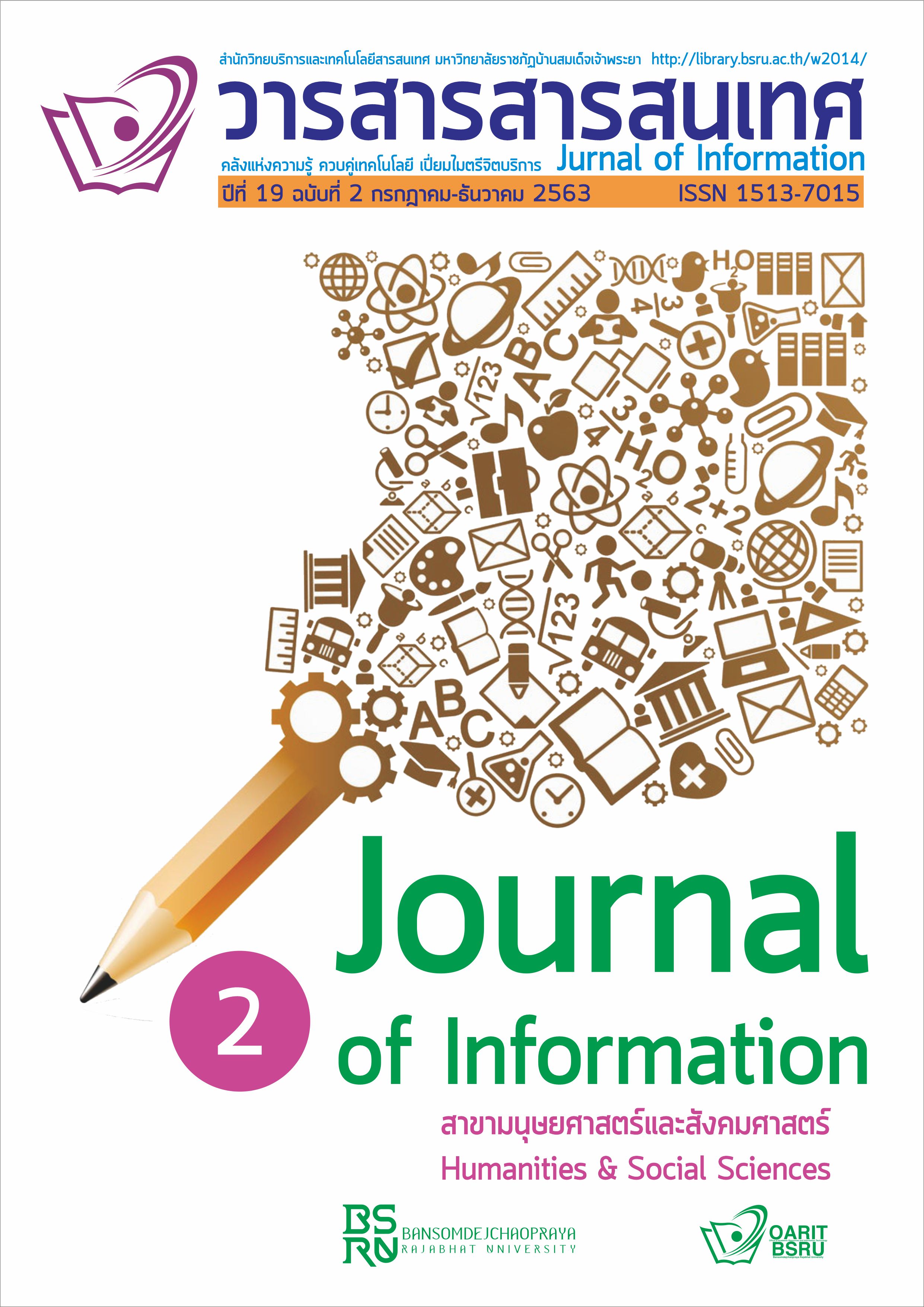The Participation of Community to Develop the Potential of Sustainable Eco-Tourism of Nakhon Pathom Province
Keywords:
participation of community, developing the potential of eco-tourismAbstract
This research aimed to 1) study the participation of local community on the potential of sustainable eco-tourism of Nakhon Pathom province. 2) analyze the SWOT and TOWS Matrix to establish proactive strategy to enhance the potential of the eco-tourism and 3)
employ the strategy to develop the potential of the eco-tourism.Quantitative and qualitative methods were used in this research. For quantitative method, 316 people from 2 areas were sampled by accidental sampling and asked by a questionnaire. For qualitative method, focus group with 20 government officers and local entrepreneurs from Klong Jinda and Klong Mahasawas community, including in-depth interview community leaders and float market manager were conducted.
The result revealed that 1) the overall participation of local community on the potential of sustainable eco-tourism of Nakhon Pathom province was at a moderate level 2) the strength of the community was a short distance away from Bangkok and the convenience of public transport; the weakness of the community was the limited budget, the lack of business knowledge; thus, it had to be supported by government; the opportunity of the community was the possibility in adopting IT system and modern communication to help in promotion and marketing, and the threat of the community was the weak management. The proactive strategy were the management of community tourism which went hand in hand with the community potential, promotion of local products to be widely-known by both Thais and foreigners and so on 3) the ways to develop the potential of sustainable eco-tourism for the community people of both Klongs were at a high level, and those were advising tourists not to do anything affected the community identity, supporting government budget and help in solving environment problems along both banks of the Klongs and so on.
References
ประเทศ. สืบค้น 28 กันยายน 2562, จาก http://www.m-society.go.th/ article_attach/
10354/15291.pdf
นิกร มาเอียด. (2555). การมีส่วนร่วมของประชาชนในการจัดการท่องเที่ยวของเทศบาลตำบลพนางตุง
อำเภอควนขนุน จังหวัดพัทลุง (วิทยานิพนธ์ปริญญามหาบัณฑิต). สงขลา: มหาวิทยาลัย
สงขลานครินทร์.
รัชฎาพร เลิศโภคานนท์ และวิเชียร เลิศโภคานนท์. (2555). การพัฒนาศักยภาพชุมชนบ้านเหมืองกุ้งให้เป็น
แหล่งท่องเที่ยวเชิงศิลปวัฒนธรรมและภูมิปัญญาท้องถิ่น. วารสารการจัดการสมัยใหม่,12(1), 22-38.
สินธุ์ สโรบล. (2547). การจัดการการท่องเที่ยวโดยชุมชน. ประชาคมวิจัย,57, 15-21.
สุภางค์ จันทรวานิช. (2548). วิธีการวิจัยเชิงคุณภาพ (พิมพ์ครั้งที่ 13). กรุงเทพฯ: สำนักพิมพ์แห่ง
จุฬาลงกรณ์มหาวิทยาลัย.
อานิสงค์ โอทาตะวงศ์. (2557). การมีส่วนร่วมของประชาชนต่อการท่องเที่ยวเชิงอนุรักษ์ทะเลบัวแดงในเขต
เทศบาลตำบลเชียงแหว อำเภอกุมภวาปี จังหวัดอุดรธานี (วิทยานิพนธ์ปริญญามหาบัณฑิต).นครปฐม:
มหาวิทยาลัยมหิดล.
Cronbach, L. J. (1970). Essentials of psychological testing (3rded.). New York: Harper& Row.
Graneheim, B. L. (2004). Qualitative Content Analysis in Nursing Research: Concepts,
Procedures and Measures to Achieve Trustworthiness. Nurse Education Today,
24, 105-112.
Miles, M. B., & Huberman, A. M. (1994). Qualitative data analysis (2nded). Thousand Oaks:
SAGE.
Yamane, T. (1973). Statistics: An introduction analysis (3rded). New York: Harper and Row.
Downloads
Published
How to Cite
Issue
Section
License
บทความ ข้อความ ภาพประกอบ และตารางประกอบที่ลงพิมพ์ในวารสารเป็นความคิดเห็นส่วนตัวของผู้นิพนธ์ กองบรรณาธิการไม่จำเป็นต้องเห็นตามเสมอไป และไม่มีส่วนรับผิดชอบใดๆ ถือเป็นความรับผิดชอบของผู้นิพนธ์เพียงผู้เดียว






